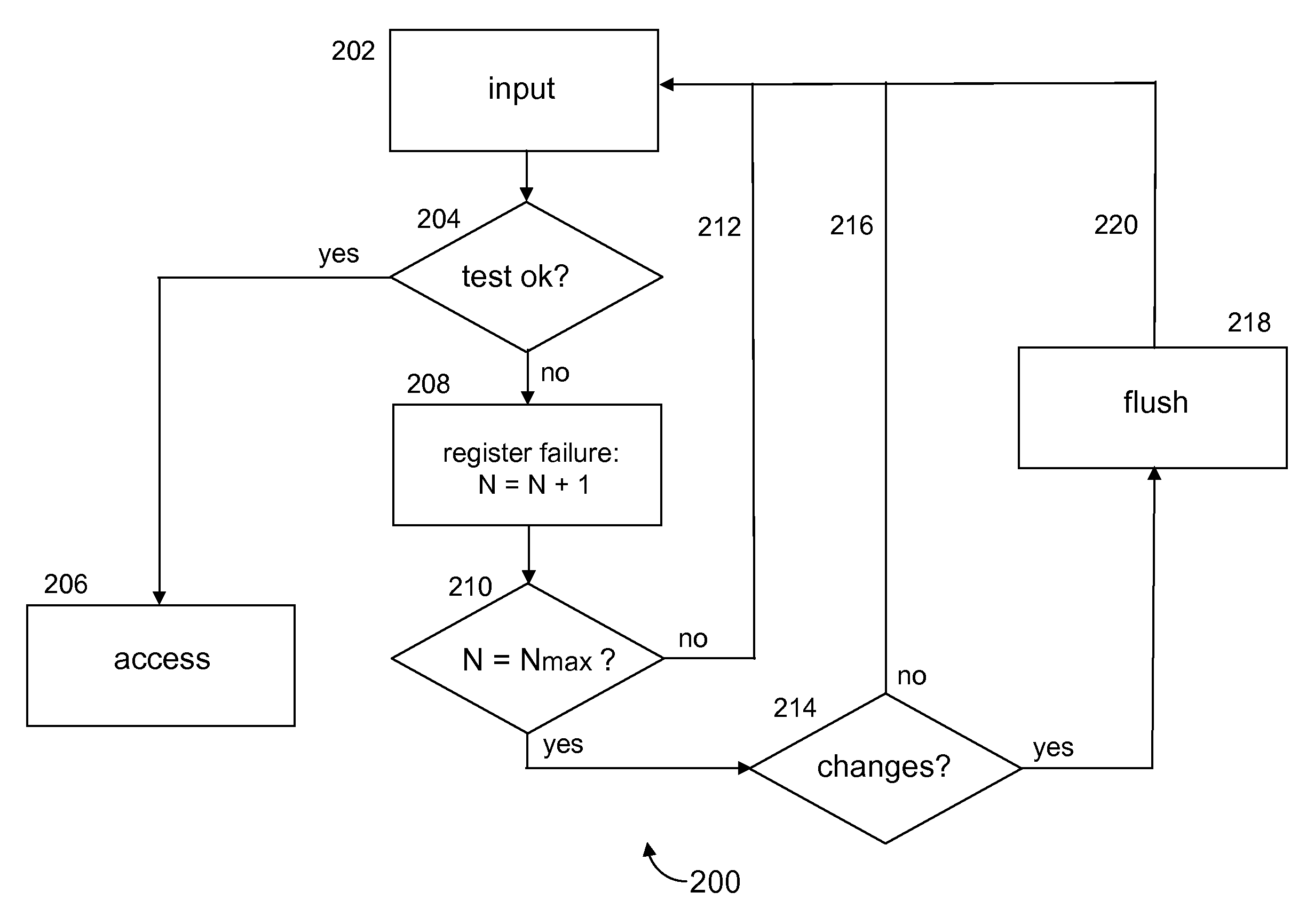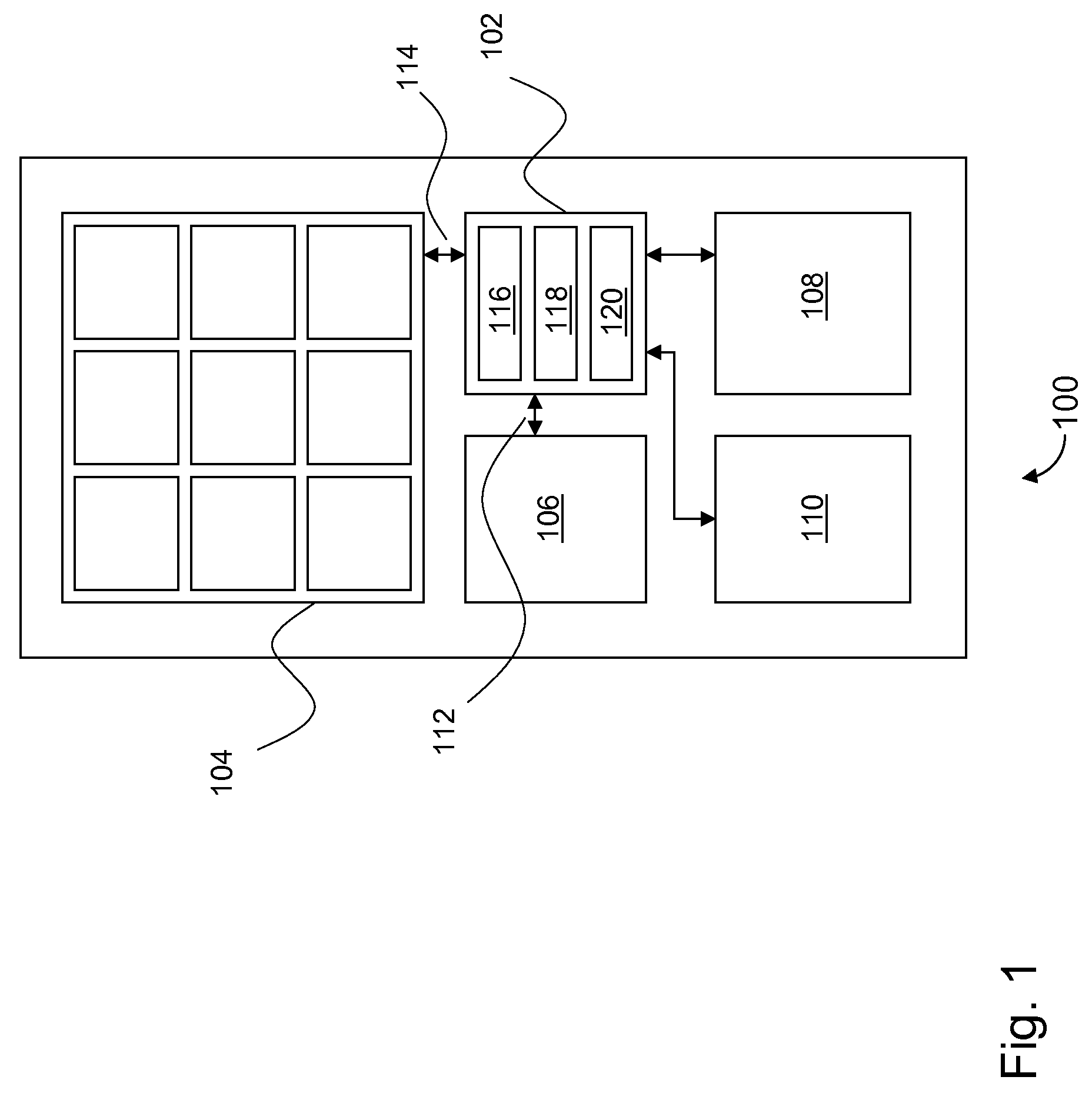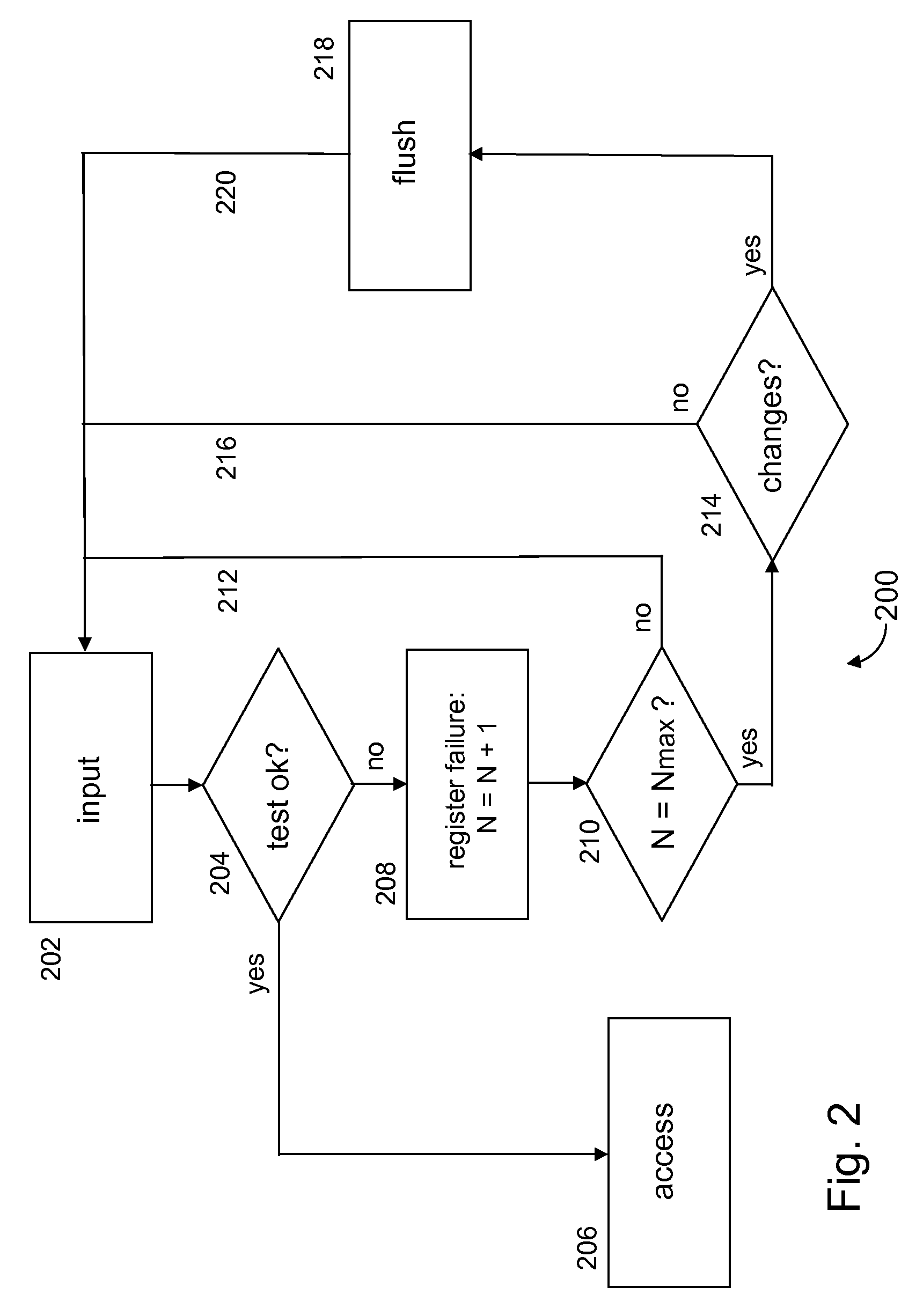Protecting a mobile device against a denial of service attack
a mobile device and attack technology, applied in the direction of unauthorized memory use protection, instruments, wireless communication, etc., can solve the problem of very difficult compromise of methods
- Summary
- Abstract
- Description
- Claims
- Application Information
AI Technical Summary
Benefits of technology
Problems solved by technology
Method used
Image
Examples
Embodiment Construction
[0034]FIG. 1 illustrates a typical mobile device 100 comprising a malware protection unit 102 according to one embodiment of the invention. The mobile device may be a smart phone, a personal digital assistant (PDA), a laptop or any other mobile communications device capable of providing services over one or more mobile networks. The mobile device comprises an input terminal 104, e.g. a keypad or a touch screen, allowing a user to enter a personal code, e.g. a PIN or a PUC. Further, the mobile device may comprise a smart card 106 for authentication purposes.
[0035]The smart card may comprise a SIM for authentication to a GMS type network and / or a USIM for authentication to an UMTS type network. CDMA-based mobile devices often use a Removable User Identity Module (RUIM). Many CDMA-based standards however do not include any such card. In that case authentication to the network is based on a unique code contained in the mobile device itself. The smart card comprising the SIM or the USIM ...
PUM
 Login to View More
Login to View More Abstract
Description
Claims
Application Information
 Login to View More
Login to View More - R&D
- Intellectual Property
- Life Sciences
- Materials
- Tech Scout
- Unparalleled Data Quality
- Higher Quality Content
- 60% Fewer Hallucinations
Browse by: Latest US Patents, China's latest patents, Technical Efficacy Thesaurus, Application Domain, Technology Topic, Popular Technical Reports.
© 2025 PatSnap. All rights reserved.Legal|Privacy policy|Modern Slavery Act Transparency Statement|Sitemap|About US| Contact US: help@patsnap.com



